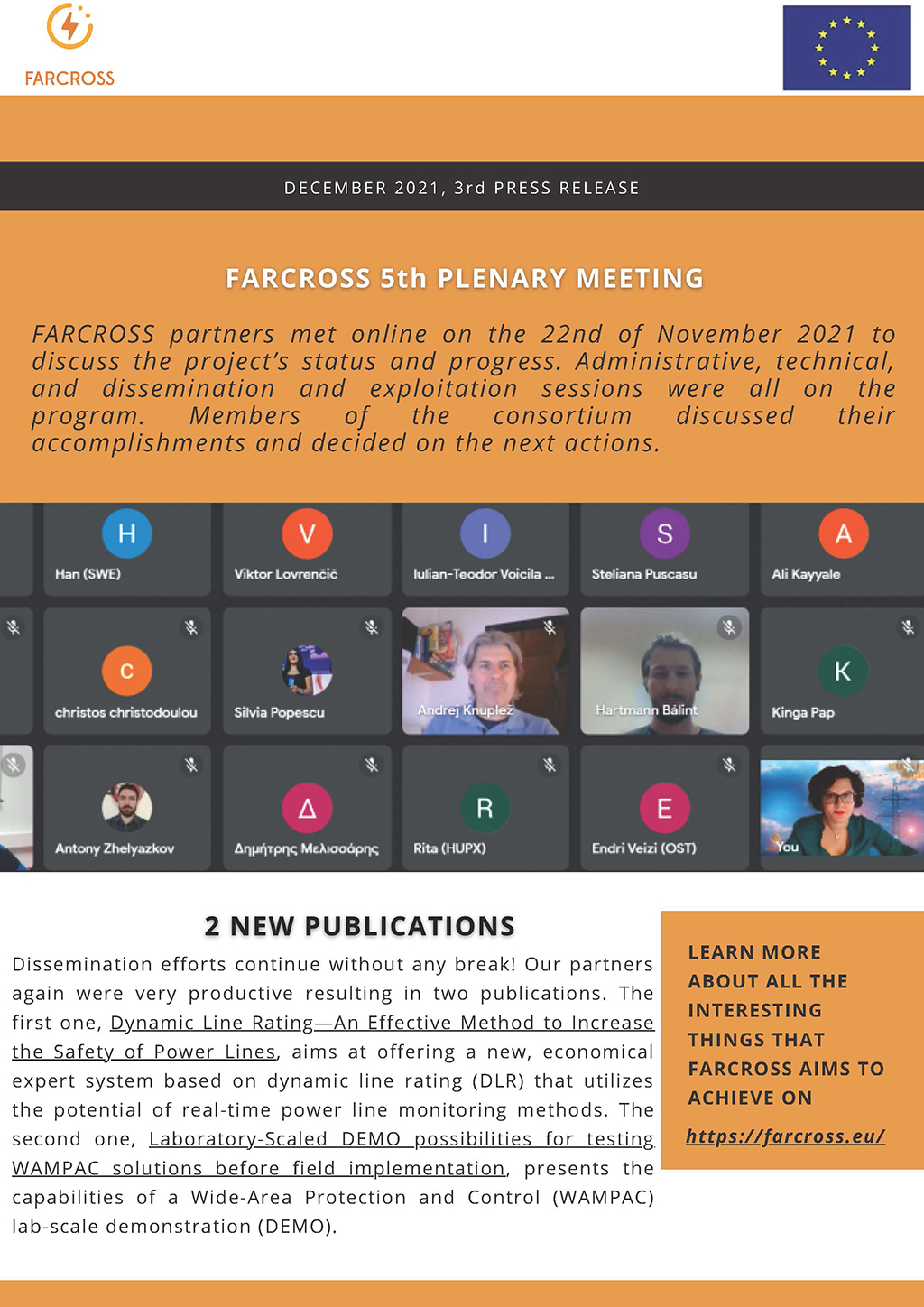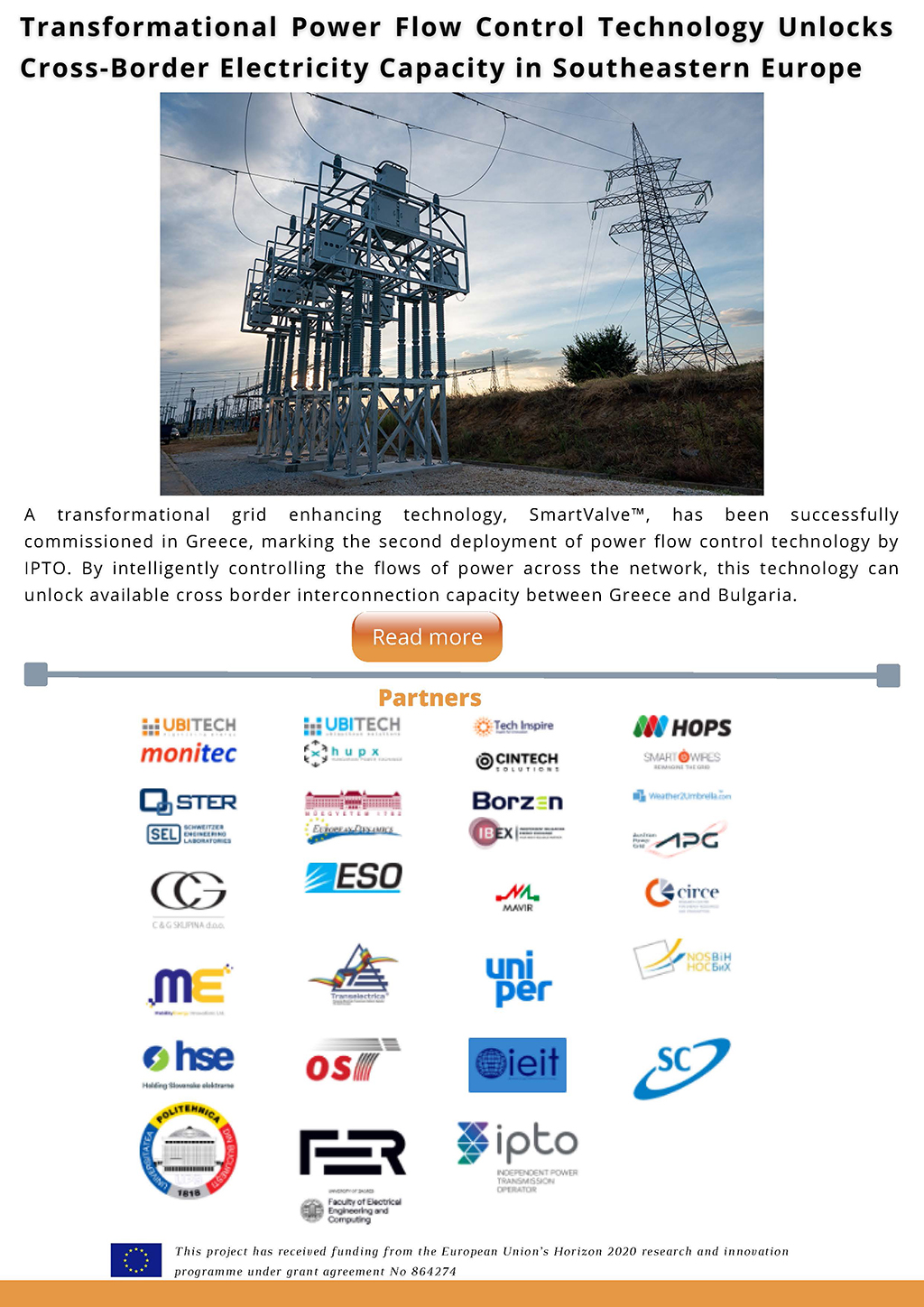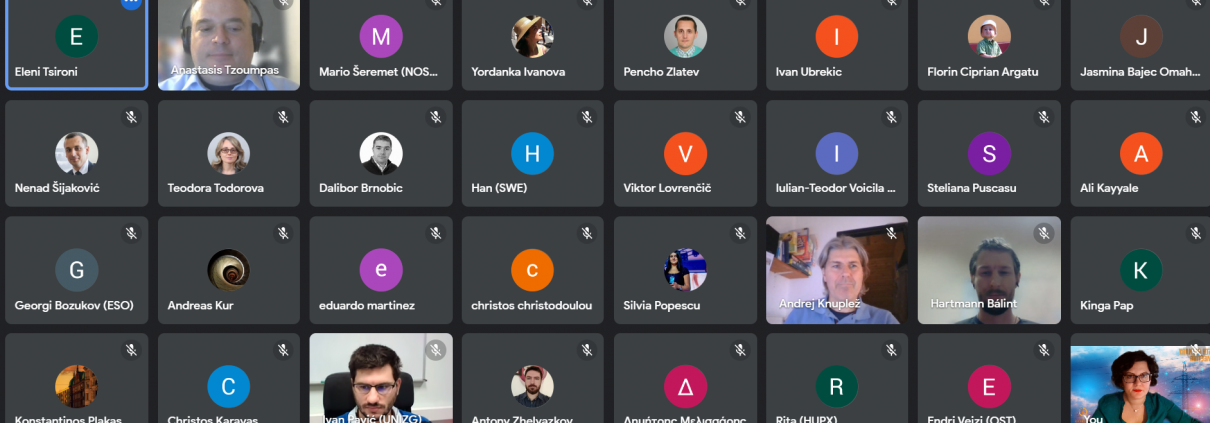Watch the Smart Wires latest project video with IPTO-Independent Power Transmission Operator on how SmartValve™ technology is unlocking cross-border electricity capacity in South-Eastern Europe, as part of the FARCROSS project.
FARCROSS partners met online on the 22nd of November 2021 to discuss the project’s status and progress. Administrative, technical, and dissemination and exploitation sessions were all on the program. Members of the consortium discussed their accomplishments and decided on the next actions. For the time being, the COVID-19 limitations have had no effect on our activities.
A transformational grid enhancing technology, SmartValve™, has been successfully commissioned in Greece, marking the second deployment of power flow control technology by IPTO. By intelligently controlling the flows of power across the network, this technology can unlock available cross border interconnection capacity between Greece and Bulgaria.
The project is part of the FARCROSS Horizon 2020 project, which aims to increase cross border electricity flows across South-Eastern Europe and improve market coupling by leveraging innovative solutions.
Announcing the successful installation, George Papaioannou, Director of IPTO’s Research, Technology & Development Department, said “Innovative projects like this are key to Europe’s energy transition and we are delighted to be collaborating with Smart Wires and ESO to improve utilization of our existing networks.”
Mark Norton, Smart Wires’ Vice President, Business Development Europe commented “Increasing interconnection capacity across

Europe has been identified as a necessary enabler of market integration and reaching a decarbonized future.”
“This project will do just that – significantly increasing interconnection capacity and heralding a new era of solving grid challenges with rapidly deployable, flexible next-generation technology,” Mr. Norton said.
The technology works by pushing power off overloaded lines and pulling power on to underutilized lines; balancing power flows across multiple lines and relieving internal constraints that limit cross-border flows. The SmartValve technology was installed on the 150kV Nea Santa – Iasmos line.
Mr. Konstantinos Plakas, Research Electrical Engineer of IPTO’s Research, Technology & Development Department, said “Studies showed that additional capacity could be made available with the use of this technology”.
Mr. Christos – Spyridon Karavas, Senior Engineer and Technical Consultant of IPTO’s Research, Technology & Development Department, commented “This technology could potentially increase the capacity of the existing network and provide greater operational flexibility to manage constraints.”
This project builds on the previous Flexitranstore H2020 project which utilizes smart grid technologies to address the challenges of large-scale renewable energy integration and increasing grid flexibility. In this project, Smart Wires’ mobile power flow technology was initially installed in collaboration with IPTO in Greece and has recently been redeployed to Bulgaria with ESO to explore further uses cases of this technology to address some of the region’s most critical needs.
The first review of the FARCROSS H2020 Innovation Action research project with external reviewers and the Project Officer from the EC side took place on June 16, 2021, wherein the FARCROSS consortium successfully presented the results of the work of the project during the first 18 months of the project. The FARCROSS project aims to connect major stakeholders of the energy value chain and demonstrate integrated hardware and software solutions that will facilitate the “unlocking” of the resources for the cross-border electricity flows and regional cooperation. The project will promote state-of-the-art technologies to enhance the exploitation/capacity/efficiency of transmission grid assets, either on the generation or the transmission level.
UBITECH ENERGY research group, as the project’s technical coordinator, presented the project’s progress towards its technical and operational objectives, as well as a summary of the project’s achievements so far. The reviewers and the PO were impressed with the overall results of the project and provided some interesting feedback and recommendations for future work.










 This project has received funding from the European Union’s Horizon 2020 research and innovation programme under grant agreement No 864274
This project has received funding from the European Union’s Horizon 2020 research and innovation programme under grant agreement No 864274